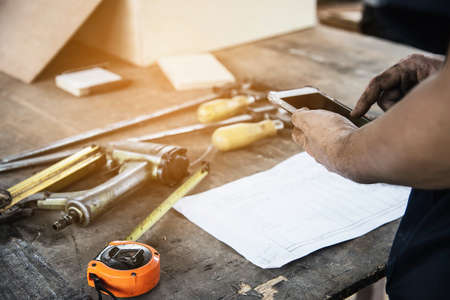Understanding Your Business Needs
Before you even think about splashing out on the latest tools or kitting out your van, it’s crucial to get a solid grasp of what your UK trades business genuinely needs. Whether you’re a self-employed plumber in Manchester or running an expanding electrical firm in London, your essential gear list will look different based on your trade and the scale you operate at. Start by making a clear inventory: what jobs do you handle most? Which pieces of kit are must-haves, and which ones are ‘nice to have’ but not vital? Don’t fall into the trap of overbuying—every unnecessary purchase is cash flow tied up for no good reason. For vans, think about payloads and access in UK towns; a massive van might look impressive but can be a nightmare when parking on tight residential streets. The key is to match your investments directly with the work you actually win, not what you hope might come along someday. By focusing on essentials tailored to your current workload, you’ll avoid wasted investments and keep your business lean and responsive—qualities that matter more than ever in today’s competitive British trades market.
Sourcing Reliable Tools and Equipment in the UK
Getting your hands on dependable tools and kit is absolutely crucial for any trades business in the UK. Whether you’re a one-man band just starting out or running a growing team, the right gear keeps you on site and ahead of the competition. But with so many options out there, where should you actually look—and how do you know you’re getting value for money?
Where to Buy: Local Options and Trade Suppliers
The UK market offers a range of places to source quality tools and equipment. Here’s a quick breakdown of your main options:
| Source | Pros | Cons |
|---|---|---|
| Builders’ Merchants (e.g., Jewson, Travis Perkins) | Wide selection, local branches, staff advice | Can be pricier than some alternatives |
| Trade Wholesalers (e.g., Screwfix, Toolstation) | Competitive prices, extensive stock, fast click & collect | Less personalised service, may not stock niche brands |
| Specialist Tool Shops | Expert advice, higher-end brands available | Potentially higher prices, limited locations |
| Online Marketplaces (eBay, Gumtree, Facebook Marketplace) | Bargains on second-hand kit, broad selection | No guarantees on quality or returns, risk of scams |
| Auctions & Liquidators | Chance to pick up bulk equipment at low prices | No warranties, must inspect items thoroughly before buying |
New vs Second-Hand: Weighing Up Your Options
Deciding between brand new and used gear is a classic trade-off—especially when cash flow is tight. Here’s how it stacks up:
| New Equipment | Second-Hand Equipment | |
|---|---|---|
| Pros | – Manufacturer warranty – Latest tech and safety features – Reliability out of the box – Can often claim VAT back if registered |
– Lower upfront cost – Potential bargains on nearly-new kit – Good for backup or less frequently used tools |
| Cons | – Higher initial expense – Depreciates quickly after purchase |
– No guarantee or warranty – May have hidden faults or wear – Harder to find specific models in good nick |
Tried-and-Tested Tip:
If you’re going second-hand, always check for serial numbers and provenance—dodgy tools can land you in hot water with the law or leave you stranded mid-job.
The Bottom Line:
Your sourcing approach should fit your business stage. Newbies might start with reliable second-hand essentials from reputable sellers, then invest in new gear as profits grow. Always balance price against reliability—after all, a tool that lets you down costs more in lost jobs than it ever saves upfront.

3. Choosing the Right Work Van
When it comes to running a successful UK trades business, your van is more than just a way of getting from A to B—it’s your mobile workshop, tool store, and sometimes even your office. Picking the right van isn’t just about how it looks on the drive; there’s a lot at stake if you get it wrong.
Size Matters: Matching Your Van to Your Trade
Different trades need different setups. Plumbers and electricians might get by with a compact panel van, while builders or landscapers often need something bigger like a Luton or long-wheelbase Transit. Think about your daily jobs: will you be shifting heavy kit, awkwardly shaped tools, or materials that demand serious space? Don’t skimp—undercutting on size leads to multiple trips and wasted time, but going too big means higher running costs.
Fuel Type: Diesel, Petrol, or Electric?
The fuel you choose will hit your pocket—and the planet—in different ways. Diesel vans have long been king for mileage and torque, but city clean air zones are making them less attractive thanks to rising road tax and daily charges. Petrols are cleaner and cheaper up front, but tend to guzzle more fuel. Electric vans are making waves in the UK market; they’re perfect for urban tradies wanting to dodge ULEZ fees and save on running costs, though range and charging points can still be limiting if you’re out in the sticks.
Insurance: Protecting Your Investment
Don’t let a prang or theft wipe out your hard-earned gear. Shop around for specialist trade van insurance—it’s not just about legal cover, but protecting tools and equipment inside as well. Factor in public liability add-ons too; clients expect it, and it covers you for those ‘just my luck’ moments.
Road Tax & Compliance: Stay on the Right Side of the Law
The UK government is tightening rules on emissions, especially in cities like London, Birmingham, and Manchester. Make sure your van meets Euro 6 standards if you want to avoid eye-watering daily charges under Clean Air Zone (CAZ) schemes. Road tax varies massively depending on emissions too—newer vans might cost more upfront but could save you thousands in taxes over their lifetime.
Practical Tips from the Trenches
If you’re buying new, haggle hard—dealers expect it. If used, check service history and MOTs with a fine-tooth comb; reliability beats fancy features every time when your business is on the line. And don’t forget ply-lining and racking—protects your investment and keeps tools from clattering about when you hit that inevitable pothole on the M25.
4. Managing Costs and Financing Options
Running a trades business in the UK isnt just about having the best kit – its about keeping your finances tight while making sure your gear wont let you down on the job. Striking that balance between cost and reliability is where many tradies either thrive or hit a wall. Let’s break down some of the most practical ways to manage your outgoings and find the right financing for tools, vans, and essential equipment.
Weighing Up Purchase vs Hire
The age-old question: should you buy outright or hire what you need? Each option has its place, depending on your workload, cash flow, and how fast you need to scale up. Here’s a quick comparison:
| Option | Pros | Cons |
|---|---|---|
| Purchase | Asset ownership; no recurring fees; potential tax relief via capital allowances. | High upfront cost; depreciation; maintenance costs are on you. |
| Hire/Lease | Lower initial outlay; fixed monthly costs; often includes maintenance. | No asset at end of term; long-term can be more expensive; restrictions on usage. |
Financing Your Essentials: What Works for UK Trades?
If buying outright isn’t realistic – especially when you’re starting or looking to expand – there are several financing routes worth considering:
- Hire Purchase (HP): Spread the cost over time with fixed repayments. At the end, the asset is yours. Popular for vans and pricier kit.
- Operating Lease: Pay a monthly fee to use equipment without owning it. Suits fast-moving tech like diagnostic tools that date quickly.
- Finance Lease: Similar to HP but you don’t take ownership at the end. There may be a balloon payment if you want to buy it eventually.
- Bank Loans & Asset Finance: Traditional loans or specialist lenders offer competitive rates if your credit’s solid.
- Grants: Check out local enterprise partnerships, councils, or trade associations – they sometimes offer grants for new businesses or eco-friendly upgrades (like electric vans).
Tax Implications: Don’t Get Caught Out
The way you finance your gear makes a difference come tax time. Buying assets usually means you can claim capital allowances (including Annual Investment Allowance), reducing taxable profits. Leasing payments are generally treated as an expense, deductible against income. It pays to check with an accountant who understands UK small business tax rules – missing out on reliefs is money down the drain.
Real-World Tip:
If you’re hiring because cash is tight, keep tabs on total cost over time – short-term savings can become long-term headaches if you don’t review regularly. And whatever route you take, always read the small print and check for hidden charges!
5. Maintenance and Asset Management
Practical Tips for Keeping Your Gear in Top Shape
Every UK trades business owner knows the pain of a tool breaking down mid-job. Regular maintenance isn’t just about keeping your kit shiny; it’s about avoiding costly delays and reputation damage. Get into the habit of cleaning your tools after each use, oiling moving parts, and checking for signs of wear. For power tools, follow manufacturer guidelines on servicing intervals—don’t let “if it ain’t broke, don’t fix it” cost you a job. A small investment in upkeep can save thousands down the line.
Scheduling Routine Van Servicing
Your van is more than transport—it’s your mobile HQ. Missing routine services might seem like a cost-saving move, but one breakdown on the M25 will make you think twice. Stick to a strict service schedule: MOTs, oil changes, tyre checks, and brake inspections. If you have a fleet, consider using digital reminders or fleet management apps to keep everything logged and up to date. Prevention always trumps roadside rescue.
Safe Storage Solutions
Tool theft is rampant in the UK, especially in urban areas. Don’t give thieves an easy win—invest in secure van vaults or racking systems designed for trades vans. On site or at home, always store valuable kit out of sight and use heavy-duty locks. Mark your tools with your company details using UV pens or engraving; it helps with recovery and deters opportunists. Remember: insurance only goes so far—you want to avoid the hassle altogether.
Using Digital Tools to Track Assets
If you’ve ever misplaced a laser level or lost track of ladders across sites, asset tracking is your new best friend. There are UK-specific apps that let you tag and monitor everything from drills to vans using QR codes or GPS trackers. Log serial numbers, assign gear to staff, and set reminders for servicing—all from your phone or laptop. Not only does this cut down on lost kit, but it also gives you hard data when dealing with insurance claims or tax write-offs.
The Bottom Line
Well-maintained gear keeps your business running smoothly and your customers happy. By building solid routines around maintenance and asset management—and leveraging digital tools—you’ll save money, reduce stress, and stay one step ahead of the competition in the UK trades game.
6. Health, Safety, and Compliance
If you’re running a UK trades business, health, safety, and compliance aren’t just tick-box exercises—they’re the backbone of your reputation and legal standing. Every tool you buy, every van you drive, and every bit of kit your team handles must meet rigorous UK health and safety regulations. Skimping here can land you in hot water with both the law and your customers.
Know Your Legal Obligations
First things first: get familiar with the Health and Safety at Work Act 1974, PUWER (Provision and Use of Work Equipment Regulations), and LOLER (Lifting Operations and Lifting Equipment Regulations). These set out the bare minimum standards for any trades business operating in the UK. Ignorance isn’t an excuse—if you or your staff use equipment that’s not up to scratch, you could face hefty fines or worse.
Vans: More Than Just Transport
Your work van is more than a means of getting from job to job—it’s often your mobile workshop. That means it needs to be roadworthy, secure for storing tools, and compliant with vehicle safety checks. MOTs, regular servicing, secure racking systems, and proper loading practices are all non-negotiables if you want to avoid insurance headaches and legal issues down the line.
Tools & Equipment: Safety First
Don’t just buy cheap—buy safe. Always look for CE markings or UKCA marks on new tools and equipment. Second-hand bargains from Gumtree or Facebook Marketplace might be tempting, but make sure they come with proof of testing or inspection certificates. Portable appliance testing (PAT) should be part of your annual routine.
Regular Inspections & Training
Kit needs checking—full stop. Create a schedule for inspecting ladders, drills, electrical gear, and even PPE like hard hats or high-vis vests. Document everything; if something goes wrong, paperwork is your best mate in proving due diligence. Plus, invest in training for yourself and your crew—keep everyone sharp on what safe usage looks like.
Stay Compliant as You Grow
Bigger business? Bigger responsibility. As you add more vans or staff, revisit your policies often. Keep up with changes in local authority rules (especially if you work across England, Scotland, Wales or Northern Ireland), renew certifications as needed, and don’t cut corners because you’re busy. Compliance is an investment in your business’s future—and trust me, it’s cheaper than a lawsuit.
Bottom line: treat health and safety as a core part of sourcing and managing your tools, vans, and equipment. Stay compliant from day one—it’ll save you time, money, and plenty of sleepless nights down the line.


